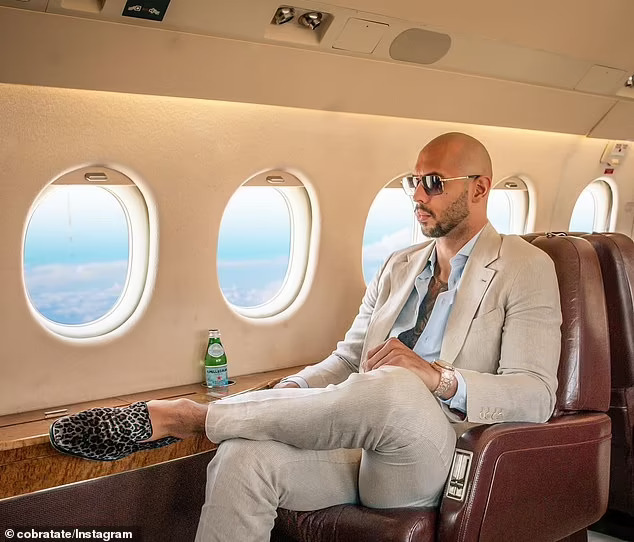 Courtesy Jonathan Hancock
Courtesy Jonathan Hancock
REXBURG — After spending 15 minutes with orthopedic surgeon Jonathan Hancock going over the details of his case, a gentleman in his 50s blurted out what many come to realize about the man who was once a prized Division 1 college football recruit.
“You’re not a typical orthopedic surgeon,” the patient said, according to Hancock.
“Well, I look forward to seeing you next Wednesday morning for surgery,” Hancock said with his big, infectious smile.
The patient went on his way, and Hancock slipped into another patient’s room to do it all over again.
It was an interesting observation of how the archetype of an orthopedic surgeon has evolved over the past 15 or 20 years. The field was once dominated by individuals who fit a specific mold: typically athletic men who had a get-the-job-done attitude that could be abrasive.
In the operating room, they thrived, wielding saws and drills with the confidence of action heroes. But many had little patience for conversation. They were often seen as rigid, arrogant and brusque, preferring efficiency over bedside manner. Cerebral, absolutely.
Hancock has football royalty in his family — his mother’s cousin is Hall of Fame quarterback Steve Young, and they share the same physical build.
But Hancock doesn’t act like a typical orthopedic surgeon of old. He decided to be atypical during his residency at Ohio University after witnessing an eye-opening interaction between a senior physician and one of the patients they were seeing in the clinic.
“Drop 50 pounds and come back in one year,” the physician said bluntly, barely glancing up from the chart in front of him.
Hancock’s jaw dropped. It should be no surprise that the doctor he followed around for six weeks played in the NFL before pursuing a medical career.
Flabbergasted at the physician’s behavior, Hancock walked out of the room with his fellow residents, whispering, “Did that just happen?”
Hancock went home that night, vowing never to treat a patient this way.
Trained in orthopedic trauma at Grant Medical Center, the busiest Level 1 trauma center in Ohio, working 100-plus hour weeks during his five-year residency, Hancock takes a partnership approach with his patients today.
If a patient needs to shed 25 pounds to have surgery, when Hancock asks, “Do you think you can lose two pounds a month?” it changes the entire dynamic. Instead of a demand, it becomes a conversation. Instead of an intimidating mountain to climb, it’s a series of small, manageable steps. His question invites his patient to participate in their own success, giving them a sense of control and partnership in their care.
“Let’s have you check back in three months,” Hancock says.
He says it’s about holding them accountable in a kind-hearted way.
An Idaho native, Hancock was raised on a ranch and farm that his family settled on south of Rigby. This instilled in him a strong sense of community and service.
“I was just a ranch and farm kid with no family in the medical profession,” Hancock says.
He recalls that there was just one primary care physician in his town, Dr. Hyrum C. Blackburn, who left a lasting impression on him as a young patient.
“It was this kind doctor who planted in me the seed to become a doctor,” Hancock reflects. He remembers not just how Blackburn treated him with warmth and compassion but also how accessible health care was back then. “No matter what ailed you, Dr. Blackburn would help you.”
In high school, a big, strong farmer and science teacher named Leon Clark inspired the future doctor to excel in his coursework. While funny and approachable, Hancock remembers Clark as being intense and demanding.
“He handed out his fair share of C’s and D’s,” Hancock says. “I told myself if I did well in his class, I could be a doctor.”
Hancock earned every bit of his perfect grade.
With football as his first love, Hancock once imagined following in the footsteps of one of the greatest San Francisco 49ers ever. But by his senior year, Young had retired after suffering several concussions. It forced Hancock to ask a hard question: “Should I play football or become a doctor?”
 Courtesy Jonathan Hancock
Courtesy Jonathan Hancock The tug to play was strong. When then Boise State head coach Dirk Koetter (who later became the head coach of the Tampa Bay Buccaneers) asked Hancock ‘Where have you been?’ at camp, it was hard not to inhale the allure of it all — the bright lights, the promise of glory and something big.
Between conversations about playing slot back or strong safety with the coaching staff, Hancock shared, “I’ll be going on a mission.”
Not yet acquainted with the religious culture of the region, the new coaches asked blankly, “What’s that?”
Hancock’s answer became clear while serving a two-year church mission for The Church of Jesus Christ of Latter-day Saints on the southside of Chicago, which he refers to as the concrete jungle.
“My mission president, a radiologist, was talking to me about my aspirations,” Hancock remembers. Still doubting himself becoming a doctor, Gordon Brown said to the young man, “No, Elder Hancock, you can do this!”
“That infused in me the desire and confidence,” Hancock says.
Although he continued to be courted by several colleges to play football after he returned, Hancock ultimately decided his future didn’t include a pair of cleats. He eventually landed at Brigham Young University-Idaho, earning his undergraduate degree in biology with a minor in chemistry.
During those early days on the Rexburg campus as a 20-something, he was going to school full-time, operating a successful stucco company with previous construction experience, and needing to log some “shadow” hours for his application to medical school at Des Moines University.
After following a couple of family practice doctors who knew a little about a lot and one orthopedic surgeon named Kevin Lee, who knew a lot about one thing, Hancock chose orthopedics.
“I saw drills and screwdrivers,” Hancock says, his face lighting up like it was yesterday that he watched Lee in the OR.
“I use these saws. I can do this,” he said with exuberance afterwards.
He could see that orthopedics was who he was, allowing him to be world-class at a specific craft.
After nine grueling years of medical training — including two summers spent earning a Master of Science in anatomy to strengthen his resume for an orthopedic surgery residency — and date nights at the kitchen table while his wife, Ashley, finished her bachelor’s in business management with three children underfoot, Hancock took a job in Farmington, New Mexico, where he helped turn around a struggling practice with the help of a sharp accountant who joined soon after. There, he completed over 200 hip replacements a year, while performing every kind of procedure imaginable.
A family man whose demanding profession can test the marital commitments of many couples, you won’t see Hancock golfing, bowling or dirt biking without his family.
Being away from them all those years of medical training, he says, “I’ve learned that I don’t like to do much of anything without them.”
Speaking of his move to Rexburg last October to become the newest specialist at Madison Orthopedics and Rigby Medical Center, he says, “We felt directed to come to Rexburg from a higher power. Our thoughts were to have more time together as a family, help our children be part of a positive community and live where the great outdoors can be explored. We have loved being closer to extended family which has ultimately drawn our family closer together.”
 Courtesy Jonathan Hancock
Courtesy Jonathan Hancock Hancock expects patients to be anxious and apprehensive about visiting an orthopedic surgeon. The idea of sawing, drilling, and reshaping bones — processes that sound intense and even brutal to the average person — naturally evokes a visceral reaction. In his own family, Hancock watched his grandfather suffer with osteoarthritis until his dying breath, never seeking the care that would have provided him a higher quality of life.
Hancock takes the time to walk each patient through their options, ensuring they feel heard, informed, and reassured before making any decisions about their care.
“I tell patients surgery is the last option,” Hancock says. “Surgery doesn’t always have to be the case. There are a number of nonoperative options available. If they want to receive injections for the rest of their life, I can help with that, too. Gone are the days when the surgery decision is made for you.”
For Hancock, the most rewarding moments are when he sees his patients get their lives back. It’s the grandfather who, after a knew replacement, can finally walk hand-in-hand with his grandchildren. The gardener who can kneel in the dirt again, tending the flowers that bring her joy. The former marathon runner who, no longer chasing personal bests, can take long evening strolls with a spouse without wincing in pain.
“I’m glad I have the skills to make this possible,” he says.


















 English (United States) ·
English (United States) ·